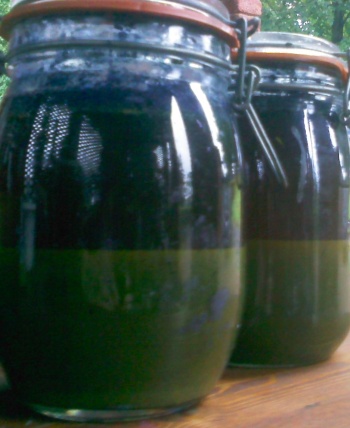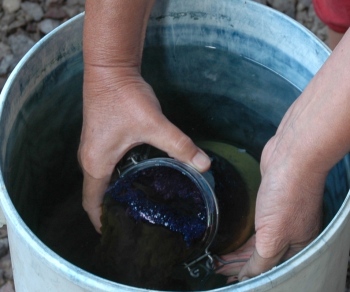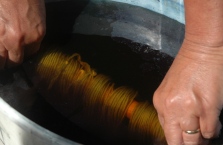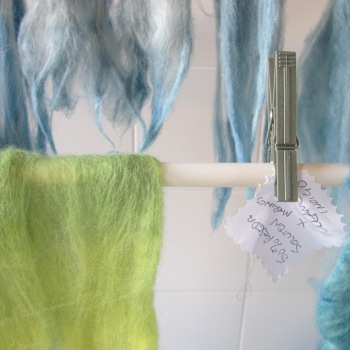This last September, shortly after I returned from Texas, I went to one of the Wool Box dye workshops that I’ve been pining to go to since last year! I don’t have a lot of studio space and I do have a young daughter and a cat…not a good combination for most kinds of dying that require a special set of pans, an outdoor set up and a series of instructions as long as both of your arms on how to mordant and how to keep things at the right temperature (and for how long) without felting up your wool!
Indigo seemed an ideal place to start: first the water does’t have to be overly warm, the indigo extract itself can be mixed, as Andie showed us, with quicklime and fructose in such a way that the solution is easy to neutralize when you’re done dyeing, and, best of all, no mordant and no cooking time!
To get started, it’s enough to soak wool in water for a few hours or cotton overnight.
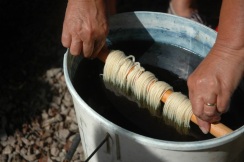
A batch of pre-soaked “Laga” goes in…
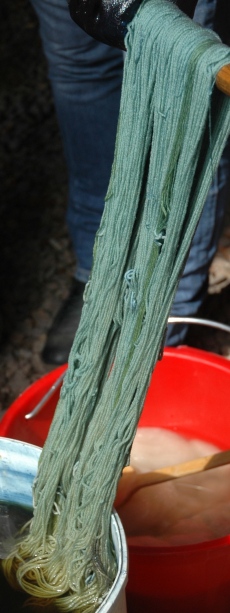
After just a few minutes in the vat, it’s time to take it out again. Now the alchemy begins! As soon as the yarn hits the air it starts to oxidize and quickly shifts from cream to green and then….
…………………………………I was amazed at how little time it took for the yarn to take the color. Andie explained that to get a denser color we could leave our yarn out for about 30-40 min and then dip it again, repeating that process until we achieved the depth of color that we were looking for.
Then there was the magic moment: I’d read about it and heard it described many times, but seeing it happen was truly wonderful. As the yarn was slowly pulled out of the tobacco-gold colored liquid in the vat, it immediately began to shift from cream to green and then the blue seemed to wick through the fiber! Indigo, we excitedly dipping the pre-soaked fleece into the vat and prepared a second vat of yellow ‘weld’ to take the skeins and roving, which Andie had kindly pre-mordanted for us. These would become the brilliant grass greens and turquoise.
Afterwards we learned how to make up the concentrate ourselves, measuring out the simple ingredients, testing the temperatures, stirring the mixtures at the right time and then watching the sediment settle. It was a long day, full of fascinating information, pleasant companionship and the simple pleasure of making something beautiful with our own hands…
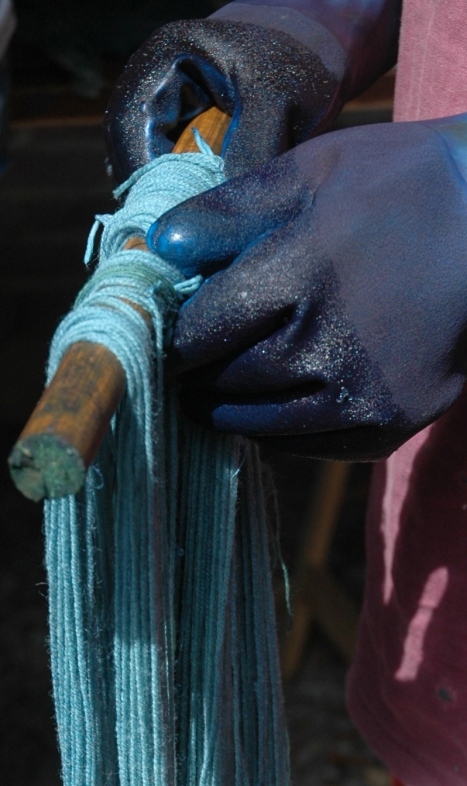
Indigo! You can read Andie’s own blog post about the workshop HERE.
The next post will take us to the emerald city where weld and indigo cross paths….in the meantime, I especially want to thank my fellow student Emanuela for generously sharing her photographs of the workshop with me to fill out the (very many) wonderful moments that I didn’t catch with my camera. Happy wool working!

